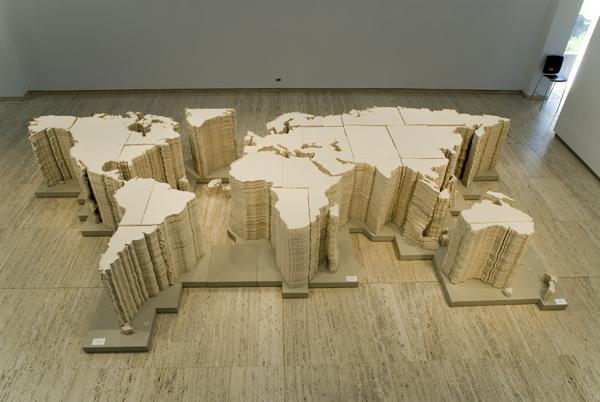POST FIVE: SCRAP CONEXT
Looking at the 'Scrap' piece in different contexts brings new meanings and developments.

Scrap in the art gallery. Here a folded permutation of scrap is in a gallery space. This is how I imagine it being shown at the moment, though maybe it has existed in previous settings which are re-told at the gallery. The context of the art gallery, is not unlike the context of a garment, as both are places which are a designed environments. In reduction they are also both enclosed spaces although implying different level of scale and social use. I think if I place worn environments within the public environment of a gallery, the transition from personal to public space will be confronted.

Scrap in the cardboard recycling. This is a context relates to the material the object is produced from. As it's made of cardboard, it fits in the package recycling box. I like the idea that a cardboard box can be designed. I like that the use of something which is used as packaging could be applied to the contents. For example if the box folded out to a pattern piece, which was then used to trace onto the required fabric contained in the box.

Scrap as a fence. Scrap in the context of a fence gives it a feeling of borderline, which in a way is what a pattern piece is, or has the intention of being. This also reminds me of earlier images I was looking at in the development and research for Scrap, of works by RON RESCH. Particular a piece where he used his folded paper as an acoustic panel. Pattern Pieces could be used first as a pattern and then slotted together to create an acoustic wall.
Scrap in the garden. I love this one. Cardboard Planters. Pattern Cards having a second use as a decomposable and modular system of potting and growing plants. The slits have a good effect here.

 Scrap in Ikea. Here Scrap becomes a flat-pac. It's place denotes ideas surrounding its accessibility and dissemination.
Scrap in Ikea. Here Scrap becomes a flat-pac. It's place denotes ideas surrounding its accessibility and dissemination. 


No comments:
Post a Comment